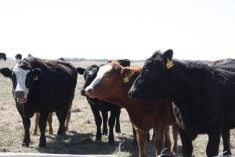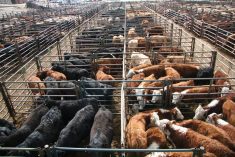RED DEER – Barley could be a more competitive and profitable crop if it was sorted for specific needs.
Vern Racz, executive director of the Prairie Feed Resources Centre at the University of Saskatchewan, told a barley symposium in Red Deer on June 19 that identity preservation of feed barley designed for hogs or cattle could provide more profit for the grower than would blending all the barley for feed that failed to meet malting requirements.
Racz, who is a strong advocate of identity preservation of cereals and oilseeds, said the world is moving toward designer meat and specialty grain for food animals, and that Canada should do the same.
Read Also

Canada told trade crisis solutions in its hands
Canadians and Canadian exporters need to accept that the old rules of trade are over, and open access to the U.S. market may also be over, says the chief financial correspondent for CTV News.
For example, he said hulless barley works well for hog and poultry feed, but is often treated like a generic product.
“Hulless barley, unfortunately, has only been mildly successful. If we had an identity preserved system and captured the real true feed value of it, we would have been truly successful.”
Inland terminals should be able to offer growers contracts for malt and feed, thus providing an assured supply for the livestock and brewing industries. The terminals could also separate each variety for its best use.
Evaluate merits
When producers are feeding barley, Racz added, they should also estimate its value against corn in terms of price and nutritive benefits. Producers also need to determine barley’s greatest feed benefits. For example, barley silage provides more protein and energy than grain, so there is a higher return available on silage per acre.
Saskatchewan is a major producer of feed barley, growing 38 percent of the Canadian total. Much of it goes to Alberta, but Racz argued this is not sustainable.
“How long can we continue to send barley to southern Alberta from Saskatchewan? Once freight is deducted, it is not economical.”
Instead, Saskatchewan needs to expand its beef industry and keep the grain at home, he said.

















